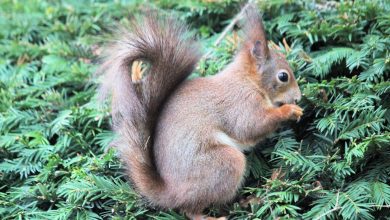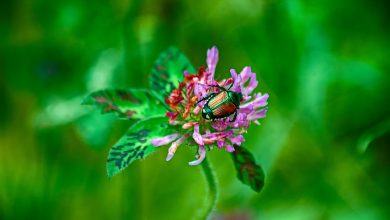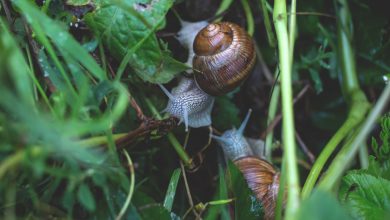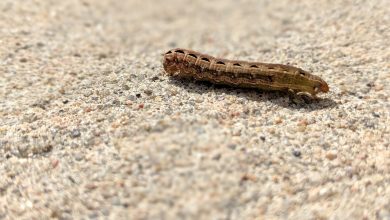How to Deal with Rabbits in the Garden
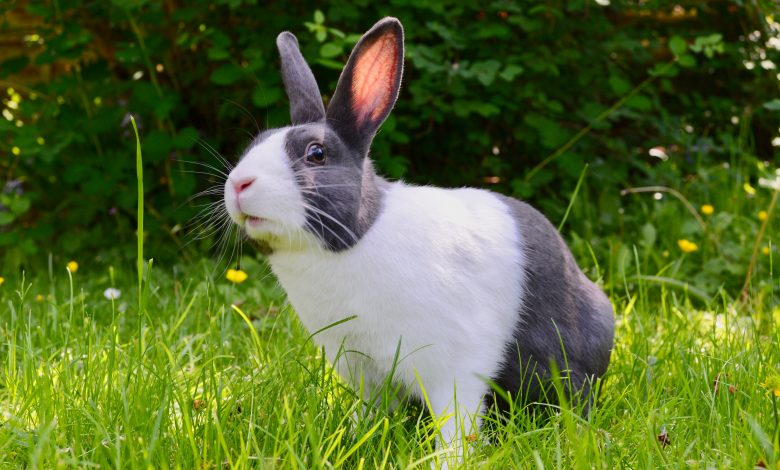
When you are gardening, you might encounter a range of pests. Whether you are focusing on flowers, vegetable, fruits, and other plants, there is bound to be some animals or insects that enjoy what you produce in your garden. There are all kinds of different garden pests, and some of these are more prevalent in some seasons and regions than others.
The potential damage that can be done by these pests varies greatly. If you are dealing with a large population of garden pests, your whole garden could be at risk. If you only have to deal with a small pest outbreak, it’s going to be easier to deal with the challenge. Pests can target leaves, fruits, flowers, barks, roots, and any other part of the plants in your garden.
You may see more pests during the spring and summer months, but it all depends on the nature of the pests and the plants being targeted. With some knowledge and a whole arsenal of tricks, you can protect your garden from the damaging effects of garden pests. It’s important to keep a close watch on what is in your garden because the sooner you can identify that there are pests, the sooner you can act. Many times, taking fast action can be the difference between saving your harvest and losing all your crops.
Rabbits in the Garden: Friends or Foes?
Rabbits are your cute and furry friends – until they are not. Many people keep bunny rabbits as pets. If you have a big vegetable garden, you can even supply most of your pet rabbit’s food needs from your very own yard.
The trouble comes when you have wild rabbits coming into your garden from elsewhere. Without confinement, these usually sweet animals can wreck a lot of damage to your garden. They have large appetites and often reproduce, making the risk of a rabbit infestation quite huge. In a single breeding season, female rabbits can give birth to as many as 18 baby rabbits. That is a lot of hungry mouths to feed. You might not like to think of rabbits as pests, but they are indeed major garden pests, especially as far as vegetable gardens.
Many parts of the country face huge rabbit problems in their season. There are many ways to address this challenge, and these are discussed thoroughly a little later on. First, you need to know how to identify a rabbit problem in your garden.

Identifying a Rabbit Problem
Garden pests can cause a lot of harm in your garden. If you have seen garden rabbits overtaking your garden and are suspecting that they could be the culprits, there are a few telltale signs that there are rabbits in the area.
One of the easiest pieces of evidence that rabbits have been eating your garden is the sight of their droppings. Rabbit poop is in the form of coarse and round pellets. If you see these scattered around, there is a good chance that you have a rabbit problem on your hands. The size of the pellet depends on the rabbit species in question, but the usual size is between a fourth of an inch of an inch in diameter.
Rabbits also leave other traces of themselves where they are ravaging a garden. It’s not uncommon to see rabbit fur or hair caught under trees or bushes. If there are rabbit trails nearby, you should examine them for any traces of rabbit hair.
It has already been touched on that rabbits are big eaters, so the biggest evidence of these furry animals in your garden in the volume of crops they consume. Rabbits enjoy eating on many different varieties of tender plants. Whatever season, they can find something to chew on. They love clover and new grass during the springtime. In the fall and winter seasons, there isn’t as much food around. Rabbits target any available seedlings and bark.
Rabbits can eat almost anything, but their favorite foods are probably yours too. They love a range of vegetables and can present a real challenge for homeowners who are growing these for their own enjoyment. If you have carrots, lettuce, peas, beans, broccoli, and other vegetables around, you might have some real competition. Rabbits also enjoy some herbs, like parsley, and fruits, such as berries, plums, and apples. You may even find your ornamental shrubs, flowers, and trees being targeted by these hungry animals.
If you examine the trees in the area, you might just see another sign of the presence of rabbits in your garden. Rabbits like to gnaw on trees. Their favorite types are the ones with smooth and light bark. Rabbits particularly love the shoots growing on young trees. Rabbit gnawing can be quite destructive, as it removes the trees’ protective bark. Trees, however, are not the only thing that rabbits like to gnaw on. You might also find evidence of rabbits gnawing on cloth, cables, and hoses.
Many garden pests and intruders, such as deer, woodchucks, and squirrels, can also produce similar types of destruction. These animals also like to feed on young plants and gnaw on the bark. You shouldn’t conclude that you are dealing with rabbits unless all the signs add up. You know there are rabbits when you find their characteristic fecal pellets, plants are chopped off, and bark is gnawed. If you are lucky, you might catch a glimpse of rabbit tracks in the soil. Rabbits have long back feet, and this makes their impressions easy to spot.

Controlling Rabbits in Your Garden
Now that you have found evidence that rabbits are running amok in your yard, you can decide on the best course of action. There are several options at your disposal, and most of these work successfully. For answering the question of how to keep rabbits out of the garden, you must examine the affected area, types of plants, and resources at your disposal.
To control rabbit damage in your garden, you can either limit their access to your plants, discourage them from getting into your garden, or seek professional pest management services.
Limit Rabbit Access
Garden Fence
The best way to protect your garden from wildlife is to put a fence around it. This can also work for other parts of your yard that require protection. To keep rabbits out, the fence needs to be at least two feet high because anything lower might allow the animals to jump over it. For the fence material, chicken wire works, and you can use one with a mesh of a half an inch to one inch. Rabbits are great at burrowing, so the fence must go deep into the ground to prevent this from happening. A good depth is six inches underground. Alternatively, the fence can be secured to the ground so that it is impossible to access the garden from beneath the fence. You can also use electric net fencing for seasonal gardens.
Individual Plant Protection
If you don’t want to place a fence around your entire garden, another option is to use individual plant protection. Once again, chicken netting with a a four of an inch to a half of an inch mesh can be used. All you have to do is place this in a cylinder shape around new shrubs, vines, and trees. The fencing should be secured at the bottom and a few inches wider than the plant’s diameter to prevent the rabbits from getting to the plant.
Plant Coverage
Along the same lines of limiting rabbit access to your plants, you can use targeted coverage to keep your vegetables out of reach. This could look like a mini shed over your most vulnerable crops. Rabbits are particularly fond of vegetables such as peas and beans. You can use garden fabric and some wire to cover these crops completely. Your salad greens can be kept safe from rabbits and other pests. Garden fabric is ideal because it allows the plants to respire and experience natural airflow but keeps them safe from introducers.
Modify the Rabbit Habitat
If you have identified an area where rabbits are nesting, you can target this area to prevent rabbits from returning and getting into your garden. You can remove the nesting area, block it off, or find another way to modify it. Rabbits usually look for nesting sports where there are branches from low shrubbery. If you can eliminate these all together with dense vegetation and piles of wood and organic debris, you can control rabbit nesting in the area. Another area that rabbits like is in the spaces beneath buildings. These can be sealed off.
Repelling Rabbits
Live Trapping
This is an option that could work, but it is not as simple and straightforward as some of the other methods suggested here. Once you have caught the rabbit, you are now faced with the dilemma of what to do with it. You need to be ready to transport and release the rabbit somewhere far from your garden. In many states, rabbits are regarded as agricultural pests. Cute as they are, they can be disease carriers, so you might need to find out if there are laws regarding the release of wild rabbits in your state.
Chemical Repellents
There is a whole range of chemical repellents you can use to ward off rabbits. These can be applied to plants that rabbits might target, including vines and trees. As with any chemicals in the garden, be it fertilizer, insecticide, or pesticide, you should read the instructions carefully and follow them to the letter. Chemical repellents can have a less than pleasant odor, taste, and stickiness. They are likely to be toxic and, therefore, not to be used in vegetable and food crop gardens, as they can make these unsuitable for human consumption. It should also be noted that, when you use a repellent, you must reapply it often because it doesn’t work for a long time.
Natural or Home-Made Repellents
Rabbits use their noses to sniff a lot. This sense is very sensitive in rabbits, and because of this, you can use some easy repellants from home. Some options to look into include sprinkling sulfur on your plants in its dry form. Rabbits also dislike the smell of onions, so might want to consider planting some of these in your garden. You can also try dusting some talcum powder or powdered red pepper onto your plants.
Some people suggest using Irish Spring soap shavings placed in small drawstring bags. These can be placed around the garden to keep the rabbits away. Another suggestion is to whip up a concoction that has a bad taste and can deter rabbits. You can include hot peppers, onions, and plenty of garlic. These can be left in water overnight and strained later. This mixture is then sprayed onto plants and again after there is rainfall. There are some products sold that include a strong-smelling garlic oil. These are worth trying. One other option to try is to spray your plants with a mixture of one teaspoon Lysol in a gallon of water.

Methods That May Not Work
You have read about some methods that can help to restrict, repel, or eliminate rabbits from your plants. You may be tempted to try some other methods as well. There is more than one way to skin a cat, but there are also many ways that simply don’t work. These include scarecrows, noise and lights, and pesticides. Whatever you do decide to try, you just have to make sure there are no negative implications for your pets and those of your neighborhoods, on the edibility of your plants, and anything else that affects the success of your garden.
Scarecrows
While scarecrows may work for birds and other creatures, they usually don’t yield any real benefits when dealing with rabbits. Some of the scarecrows that people have tried in the past include figurines and plastic models of owls, snakes, and hawks. While rabbits are afraid of their natural predators, they may not be convinced about these faux versions.
Loud Sounds and Bright Lights
One way to deal with an animal as it is feeding off your vegetables is to scare it off with a loud sound or with bright lights. Doing this can work in the immediate moment, but once that wears off, the rabbit is going to come right back to continue feeding on your plants. There are many different devices that are marketed to keep up the scaring effect, and this includes flashing lights, ultrasonic sound waves, and noisemakers. Even though they have some effect because they are continuous, after a few hours, the rabbits get accustomed to the disturbance and start to ignore it.
Pesticides
Pesticides do not work with rabbits, and there are no EPA-registered ones for rabbit control. Rabbits are rodents, but they cannot be effectively tackled with rat and mouse poison and bait. Using these poisons outdoors can end up killing pets in your neighborhood. You are better off using one of the methods specifically suited for rabbits. Additionally, natural and chemical-free methods are always preferable to chemical ones. There are risks and consequences whichever option you use.

While the suggestions on how to keep rabbits out of your garden outlined above can work well, you may have to try one or two methods before you find the best fit. Sometimes deploying more than one method is required to make your garden protection foolproof. The more rabbits there are in the area, the bigger the challenge is going to be. You have to be willing to keep the fight on and remain vigilant. On top of this, as rabbits reproduce rapidly, new threats and hungry mouths are going to need to be deterred. To win the battle against rabbits, inspect your fences and plants regularly. Be sure to act fast as soon as you see signs of damage or rabbit pellets. It may be worth it to look for professional pest management services and wild nuisance management.
